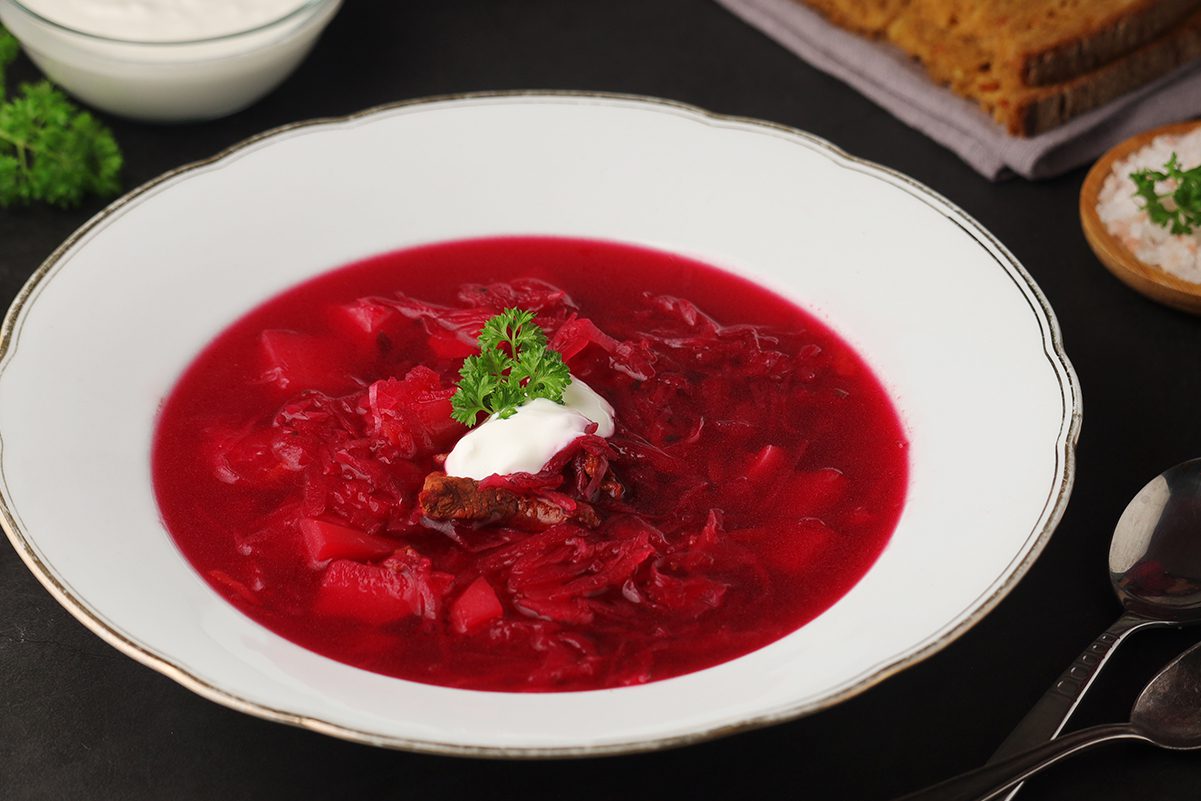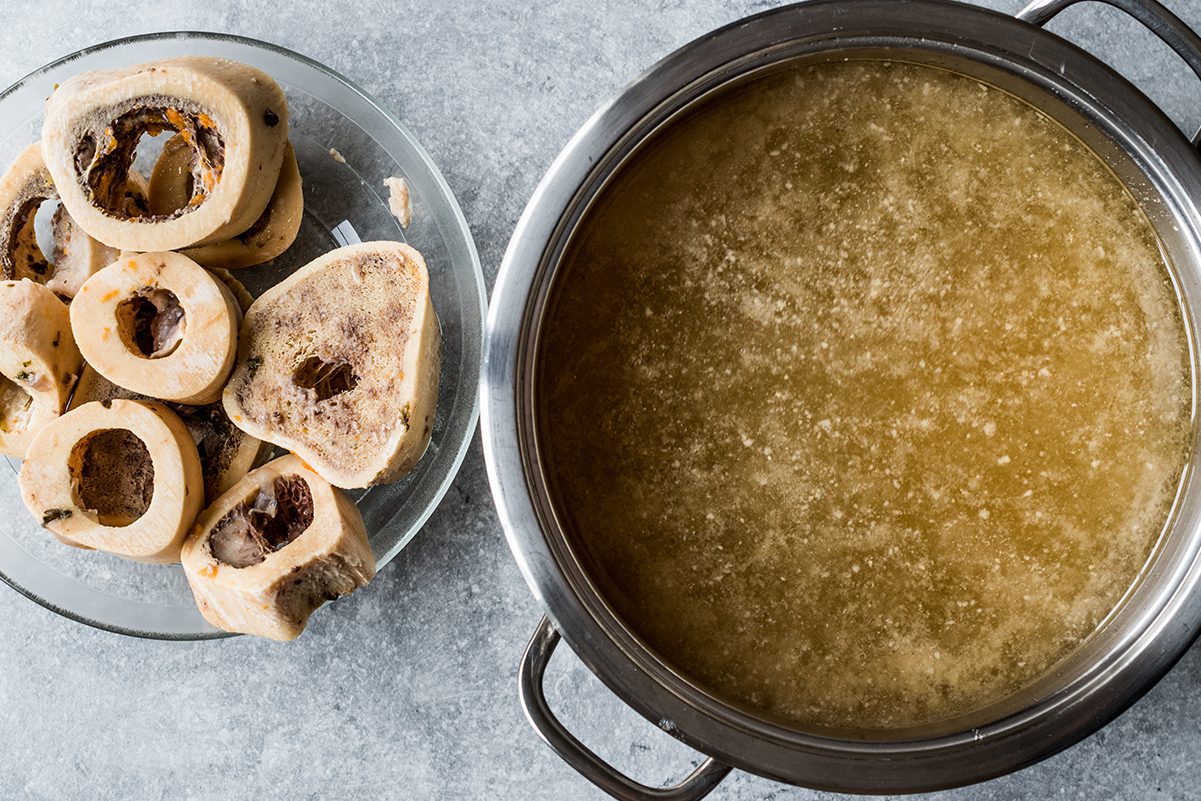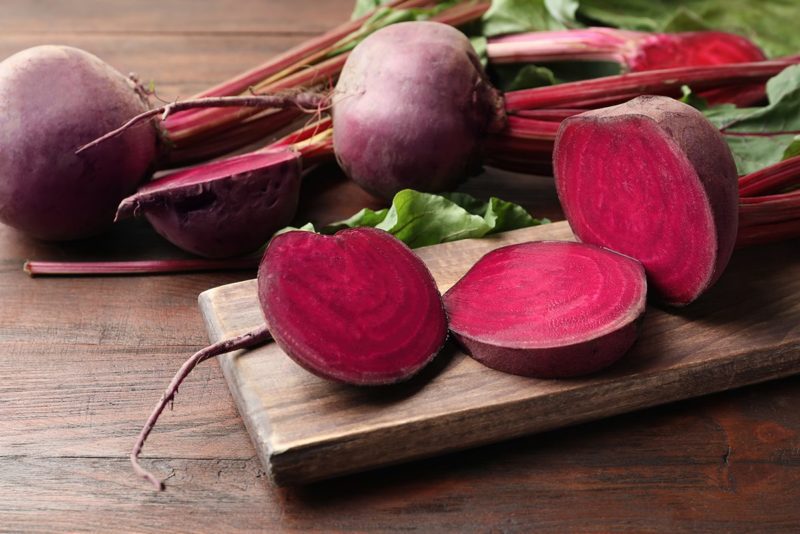Routine was important to Catherine the Great. She loved her coffee and began her day at 6 AM with two small cups—made with six teaspoons of ground coffee! It was so strong that when the breakfast plates were brought down to the kitchen for washing-up, the servants would add boiling water to the dregs, which produced a further 18 cups of coffee for “below stairs.”
Apart from a dollop of clotted cream in her coffee and two pieces of almond toast, Catherine did not eat again until lunchtime, at 1 PM. She drank an occasional glass of Madeira on her doctor’s orders but otherwise shunned alcohol. She drank plain water infused with black currants, or iced water with a drop of berry juice. Lunch consisted of three or four courses and one of her favorite dishes was boiled beef with pickled cucumbers and a sauce made of dried venison tongues.
Catherine ate a small meal at dinnertime—a full stomach at night, she said, gave her headaches—but she made sure her guests were royally fed. In his book Repast History of the Russian State, Professor Pavel Romanov described one evening’s banquet consisted of over a hundred dishes. The empress and her guests were served a dozen soups, poularde and quail with truffles, pheasants with pistachio nuts, bass with ham, teal with olives, tortoise meat, lamb roast, among them, many of which were clearly inspired by French cuisine, such as bombs a la Sardanapal, a terrine of minced game meat. Always among the sweets that ended the meal was Catherine’s favorite, the classic Russian dessert Kolomna pastila, a whipped fruit puree and meringue confection that was so prized, the recipe was closely guarded until the 19th century.
But her favorite dish of all was. . .
BORSCHT

Borscht! Soup the glorious color of a precious ruby! That quintessentially Russian meal-unto-itself, traditionally served with hunks of brown bread. The rich, earthy aroma of beetroot and cabbage conjures visions of balalaikas playing a feverish accompaniment to the pereplias and barynias of Russian folk dancers. Some gastro-historians say borscht originated in the fertile farm-belt of the Ukraine in the 1300s. It was the favorite soup of Catherine the Great as Empress of the Russian Empire, from 1762-1796.
INGREDIENTS
8-cups water
1-pound beef shanks
5 whole peppercorns
2 bay leaves
1-teaspoon salt
½-teaspoon dill weed
3 medium uncooked beets, peeled and shredded
2-tablespoons olive oil
2-teaspoons white vinegar (balsamic vinegar for a richer flavor)
2 medium potatoes, peeled and cubed
2 medium carrots, sliced
1-cup shredded cabbage
2-tablespoons minced fresh parsley
1 medium onion, chopped
1-tablespoon all-purpose flour
2 medium tomatoes, chopped (diced canned tomatoes works well)
YOU WILL NEED
A large Dutch oven or soup pot
A large skillet, preferably cast iron
A large slotted spoon
A large saucepan
A colander
Food processor or blender
INSTRUCTIONS
1. In the Dutch oven or soup pot:
Pour the 8-cups of water, add the beef shanks, peppercorns, bay leaves, salt, and dill weed. As soon it comes to a boil, reduce heat and simmer for two hours or until the meat falls off the bone.
2. In the skillet:
Over a medium flame gently sauté the shredded beets in 1-tablespoon of olive oil until soft, about 3- minutes; stir in the vinegar and set the skillet aside.
3. Remove the beef from the pot with the slotted spoon. Allow to cool, then remove the meat from the bones (discard bones), cutting the meat into bite-size pieces. Set aside.
4. Strain the beef broth through the colander and throw away the peppercorns and bay leaves, skimming off the fat. Measure the broth as you return it to the pot. If it’s less than 6-cups, add enough water to bring it up to that measurement. Add the potatoes, carrots, cabbage, parsley, and beets, bring it up to a boil, then lower to a simmer.
5. Sauté the chopped onion in a teaspoon or so of olive oil until transparent. Sprinkle the flour very gradually to be sure it doesn’t clump and stir well until blended, then whisk it into the soup pot. Add the diced tomatoes. Continue to simmer the soup with the cover on, a little askew, watching the heat so the soup does not boil over.
6. Remove the soup pot from the heat and allow to cool a little before ladling the soup in small batches in the food processor or blender. Blend well and pour into the large saucepan.
7. Add the beef to the soup and heat thoroughly on medium heat, stirring occasionally so the soup doesn’t settle to the bottom of the pot and burn.
SERVE
Serve in soup bowls and garnish with a dollop of sour cream and parsley. Borscht is generally eaten hot when served with the delicious chunks of meat, or cold when served without.
The Healthful Benefits of Bone Broth

Bone broth is packed with vitamins and minerals, especially iron, calcium, vitamin K and selenium, a powerful antioxidant that provides cardiovascular and thyroid support, and is purported to have anti-aging benefits (selenium is also found in yellowfin tuna and Brazil nuts.)
The amino acids in bone broth can help lower inflammation in your intestines and ease discomfort while improving digestion. It also boosts your immune system. The mother of a family friend who suffered from Crohn’s Disease would go to the butcher and get the finest ground sirloin, simmer it in water till the meat was white, discard the meat, and feed the broth to her daughter. Doctors were amazed and said it healed better than anything they could possibly have prescribed.
For centuries bone broth has been a beauty routine secret. Drinking a cup of bone broth a day will help your skin look smoother and firmer.
Bone broth improves the connective tissue between joints and bolsters collagen, which not only will protect your joints against wear, but ease your aches and pains.
If you need to lose weight, then bone broth not only has few calories, but will help you feel full. Use bone broth as the fluid when you make quinoa, tabouleh, or couscous.
Last but not least, if you can’t sleep at night, have a cup of hot bone broth. It contains glycine, which will relax you and bring on sleep.
Beets: A Superfood

There are more than 20 health benefits in beets. This nitrate-rich, earthy root vegetable can lower blood pressure, improve digestion and blood circulation, and prevents age-related blindness in the forms of cataracts and macular degeneration. Rich in nutrients, vitamins, and minerals, beets are an ancient vegetable that go back 4,000 years ago in the Mediterranean region, when it was identified and commonly used as an aphrodisiac.
The Journal of Applied Physiology published a report that whole beets improve the prolonged sports activity and athletic performance of runners, swimmers and cyclists, among other sports; and in another study, people who made beet juice a part of their daily diet increased their oxygen uptake by 16-percent.
Beets are rich in nitrates, which help increase oxygenation of the somatomotor cortex, the brain area that is often afflicted with early stages of dementia.
Beets are a superfood that prevent bloating, flush out toxins and excess water, stimulate and detoxify the liver, and promote weight loss. Rich in vitamin C, beets also prevent asthma symptoms and stimulate white blood cells, the body’s main line of defense against viruses, and bacterial and fungal infections.
A high source of fiber, beets prevent chronic disease, strokes, promote bone health and heart health. Betaine, which is present in beets, lowers the level of cardiovascular-causing homocysteine in the body, inhibits chronic heart inflammation, reduces bad LDL cholesterol and triglycerides, and increases good HDL cholesterol.
Best of all, beets are abundant in antioxidants and vitamin C, which repair cells and help prevent premature aging—ensuring your skin has a healthy glow!

